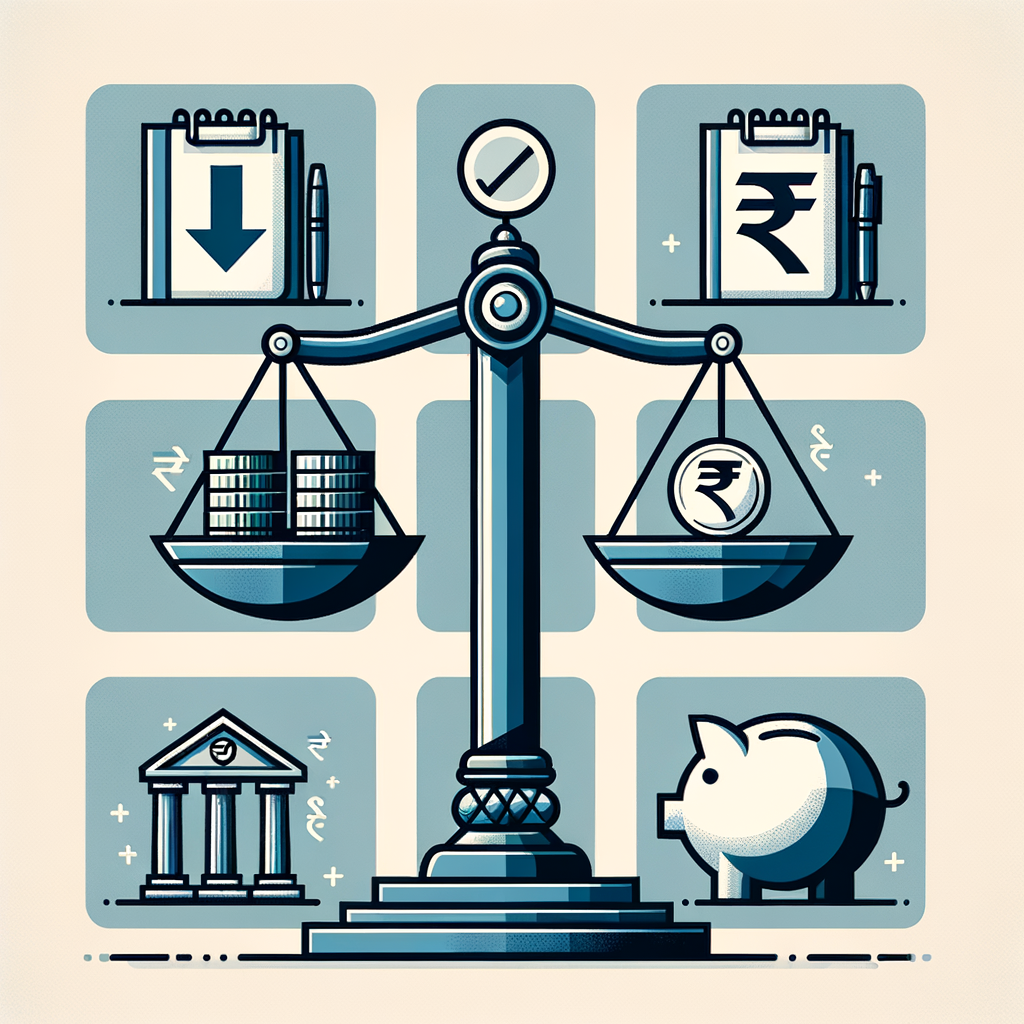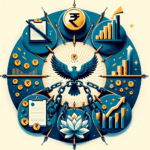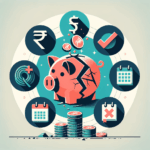Avoiding New Debt While Paying Off Existing Balances: A Guide for Indians
You’ve just paid your credit card bill and loan EMI, but an unexpected expense pops up. The temptation to swipe the card again is real. This cycle is a common financial trap for many Indians, making it feel impossible to get ahead. The core problem is getting stuck in a debt cycle, where diligently paying off one loan often leads to taking on another just to manage daily life or unforeseen emergencies. This guide is designed to break that pattern by providing a clear, actionable roadmap for both salaried individuals and small business owners on avoiding new debt while methodically clearing existing liabilities. We will explore practical debt management tips for Indians that empower you to take control of your finances and build a secure future.
First, Understand Your Current Debt: A Financial Health Check
You cannot manage what you don’t measure. Before you can create a plan for the future, you must have an unflinchingly honest view of your current financial situation. This initial step is not about judgment; it’s about gathering data to make informed decisions. Taking the time to list out every rupee you owe is the most critical first step towards financial clarity and freedom. It transforms a vague sense of financial stress into a concrete list of problems that can be solved one by one. This process illuminates the full scope of your liabilities, highlighting which debts are the most expensive and which can be tackled first to build momentum.
Create Your Debt Inventory
The first actionable step is to create a comprehensive list of every single debt you hold. Grab a notebook or open a spreadsheet and compile the following details for each loan or credit card. Be thorough and honest with yourself; missing even a small debt can throw off your entire plan. This inventory will become your master document for tracking progress and staying motivated on your journey to becoming debt-free.
- Lender’s Name: (e.g., HDFC Bank, Bajaj Finserv, SBI)
- Type of Debt: (e.g., Credit Card, Personal Loan, Business Loan, Vehicle Loan, Home Loan)
- Total Outstanding Amount: The exact principal amount you still owe.
- Annual Interest Rate (APR): This is the most crucial number. Find the exact percentage.
- Monthly EMI (Equated Monthly Instalment): The fixed amount you pay each month.
- Remaining Tenure: How many months or years are left on the loan.
Calculate Your Debt-to-Income (DTI) Ratio
Once you have your debt inventory, you can calculate your Debt-to-Income (DTI) ratio. This is a powerful metric that shows what percentage of your gross monthly income is dedicated to paying off debt. Lenders in India use this ratio extensively to gauge your ability to take on new credit. A high DTI is a major red flag indicating financial stress and can severely limit your ability to secure loans for important life goals like buying a home or expanding a business. Understanding this number is a key part of learning how to manage debts in India.
- Simple Formula:
DTI = (Total Monthly EMI Payments / Gross Monthly Income) x 100
For example, if your total EMIs are ₹40,000 per month and your gross monthly salary is ₹1,00,000, your DTI is 40%. While there’s no magic number, most banks and financial institutions in India prefer a DTI ratio below 40-50%. If yours is higher, it’s a clear sign that you need to focus aggressively on debt reduction.
The Foundation of Avoiding New Debt: Build a Bulletproof Budget
A budget is not a financial straitjacket; it is a tool for freedom. It gives you permission to spend while ensuring your money is aligned with your goals, chief among them being debt repayment. For anyone serious about avoiding new debt, creating and sticking to a realistic budget is non-negotiable. It helps you identify where your money is going, find areas to cut back, and strategically allocate funds towards your outstanding balances. Without a budget, you are flying blind, making it nearly impossible to break the cycle of living from one EMI payment to the next.
The 50/30/20 Rule: An Indian Adaptation
A popular and effective budgeting framework is the 50/30/20 rule. It’s a simple way to divide your post-tax income into three main categories, providing a clear structure for your spending and saving habits. This rule is easily adaptable to the unique financial landscape and lifestyle of modern Indians.
- 50% for Needs: This portion covers your absolute essentials. This includes your rent or home loan EMI, groceries, utility bills (electricity, water, gas), transportation costs, and insurance premiums. Your mandatory minimum debt payments (EMIs) also fall into this category.
- 30% for Wants: This is for lifestyle expenses that make life enjoyable but aren’t strictly necessary. Think dining out, ordering from Zomato/Swiggy, entertainment like movies or subscriptions (Netflix, Prime), shopping for non-essentials, and travel.
- 20% for Savings & Debt Repayment: This is the most powerful category for building wealth and achieving financial freedom. It includes your contributions to investments (SIPs, PPF), building an emergency fund, and—most importantly for our goal—making extra payments on your debts.
Prioritizing Debt Repayment Within Your Budget
When you are focused on paying off existing balances India, the standard 50/30/20 rule needs a tactical adjustment. The goal is to shrink your “Wants” category to supercharge your “Debt Repayment” category. Consider adopting a more aggressive model like 50/20/30 or even 50/15/35. This means consciously cutting back on discretionary spending (the 30% bucket) and redirecting that extra 10-15% of your income directly towards your highest-priority debt. To get an accurate picture of your spending, use your bank statements or leverage Indian fintech apps like Walnut or Money Manager, which automatically categorize your UPI, card, and bank transactions, revealing exactly where you can make cuts.
Smart Strategies for Debt Repayment in India
Once you’ve created a budget and freed up extra cash, you need a smart plan to attack your debt. Simply making minimum payments will keep you in debt for years, costing you a fortune in interest. Choosing a structured repayment method provides focus and accelerates your progress. The two most popular and proven strategies for debt repayment in India are the Debt Snowball and the Debt Avalanche. The best method for you depends on your personality—whether you are motivated by quick wins or by mathematical efficiency, a choice detailed in our guide, Debt Snowball vs. Debt Avalanche: Which Strategy Is Best for You?.
Method 1: The Debt Snowball
The Debt Snowball method is a behavioral strategy focused on building psychological momentum. With this approach, you list your debts from the smallest outstanding balance to the largest, regardless of their interest rates. You make the minimum payment on all your debts, but you channel every extra rupee you have towards paying off the smallest debt first. Once that smallest debt is completely cleared, you “roll” the payment you were making on it into the payment for the next-smallest debt.
- Example: Imagine you have three debts:
- Credit Card Bill: ₹15,000 (36% APR)
- Personal Loan: ₹50,000 (14% APR)
- Car Loan: ₹4,00,000 (9% APR)
Using the Snowball method, you would aggressively pay down the ₹15,000 credit card bill first. The feeling of eliminating an entire debt account provides a powerful motivational boost, encouraging you to stick with the plan and tackle the next one.
Method 2: The Debt Avalanche
The Debt Avalanche method is a purely mathematical approach designed to save you the most money on interest over the long term. With this strategy, you list your debts from the highest interest rate (APR) to the lowest. You make the minimum payment on all your debts, but you funnel all your extra cash towards the debt with the highest interest rate. This is often the most logical choice for effective financial planning for debt reduction India, as it systematically eliminates your most expensive debt first.
- Example: Using the same debts as above:
- Credit Card Bill: ₹15,000 (36% APR)
- Personal Loan: ₹50,000 (14% APR)
- Car Loan: ₹4,00,000 (9% APR)
With the Avalanche method, you would prioritize paying off the credit card debt first because its 36% interest rate is costing you the most money. Even though the personal loan balance is larger, attacking the high-interest credit card first is the financially optimal move.
| Feature | Debt Snowball | Debt Avalanche |
|---|---|---|
| Focus | Pay off smallest balance first | Pay off highest interest rate first |
| Primary Benefit | Psychological momentum & quick wins | Saves the most money on interest |
| Best For | People who need motivation to stay on track | People focused on mathematical efficiency |
Proactive Tips for Avoiding New Debt and Managing Finances
Paying off existing debt is only half the battle. The other, more crucial half is building a financial system that prevents you from falling back into debt in the future. This requires a shift in mindset and habits. The following proactive tips are designed to create a strong financial buffer, helping you handle life’s ups and downs without resorting to credit. This is the essence of mastering your finances and ensuring long-term stability.
Build and Maintain an Emergency Fund
An emergency fund is your number one defense against new debt. It is a pool of money set aside exclusively for unexpected, urgent expenses, such as a medical emergency, a major home repair, or a sudden job loss. Without this buffer, any unexpected cost would force you to swipe a credit card or take out a high-interest personal loan, immediately undoing all your hard work. This fund is the wall between you and the debt cycle, making building an emergency fund while managing debt a critical financial skill.
- Actionable Goal: Your initial goal should be to save at least one month’s worth of essential expenses. Ultimately, aim to build this up to 3-6 months’ worth of essential living expenses. Keep this money in a separate, easily accessible high-yield savings account or a liquid mutual fund, not in your regular transaction account where it might be spent accidentally.
Change Your Relationship with Credit Cards
Credit cards are a tool, not an extension of your income. Misusing them is the fastest way to accumulate high-interest debt. To break the cycle, you must set firm rules for how you use plastic money.
- Rules to Follow:
- Always pay the total amount due. Never, ever fall into the “minimum payment” trap. The interest charges on the remaining balance are exorbitant.
- Use debit cards or UPI for non-essential spending. For daily wants like coffee, movies, or dining out, use money you actually have. This forces you to stay within your budget.
- Beware of “Buy Now, Pay Later” (BNPL). While convenient, BNPL schemes are still a form of debt. Use them sparingly and only if you have a concrete plan to pay off the amount well before any interest kicks in.
For Small Business Owners: Master Your Cash Flow
For entrepreneurs and small business owners, the line between personal and business finances can often blur, creating a significant risk of debt. Strong business financial hygiene is essential for both your company’s health and your personal financial security.
- Specific Advice:
- Forecast Your Cash Flow: Create a simple spreadsheet to project your income and expenses for the next 3 months. This helps you anticipate potential shortfalls and plan accordingly, rather than reacting with last-minute borrowing.
- Aggressive Receivables Management: Invoice your clients the moment a job is completed. Implement a strict, professional follow-up process for overdue payments. Slow payments are a major cause of cash flow crises.
- Separate Finances Completely: Open a dedicated business bank account and use it for all business-related income and expenses. This prevents you from using personal credit cards for business needs and gives you a much clearer picture of your company’s profitability. Learning to set up an accounting system for my small business is a foundational part of this financial discipline.
The Final Piece: Balancing Debts and Savings in India
A common question that arises during a debt-repayment journey is whether to stop all investments and savings to focus solely on debt. While tempting, pausing your long-term financial goals can be counterproductive. The key is not to choose one over the other, but to find a strategic balance. Successfully reducing debt while saving India is a sophisticated financial skill that accelerates your path to true wealth. You must learn to make your money work for you through investments while simultaneously eliminating the drag of high-interest debt.
Why You Must Do Both
Stopping your Systematic Investment Plans (SIPs) or Public Provident Fund (PPF) contributions means losing out on the powerful effect of compounding. Years of missed contributions can have a significant negative impact on your retirement corpus or other long-term goals. The goal is to optimize, not eliminate. Continuing to save, even a small amount, keeps the habit alive and ensures your future self is not left behind. This approach to balancing debts and savings India ensures you are building a positive net worth from two directions—by increasing assets and decreasing liabilities.
The Golden Rule
A simple way to decide where to allocate your extra money is to compare the interest rate on your debt with the potential returns on your investments.
- High-Interest Debt (>10-12%): This includes credit card debt (often 30-40%), personal loans (12-20%), and consumer durable loans. The interest on this debt is almost always higher than any guaranteed investment return. You should prioritize paying this off as aggressively as possible. It is financially wise to pause new investments temporarily to eliminate this toxic debt.
- Low-Interest Debt (<8%): This typically includes a home loan or an education loan. The interest rates are relatively low, and you may also receive tax benefits. In this case, it often makes more sense to continue making only the minimum EMI payments and direct your surplus funds towards investments like equity mutual funds, which have the potential to generate returns higher than 8% over the long term.
Conclusion
Breaking free from the grip of debt is a journey of discipline and strategy. It begins with a courageous look at your finances by creating a debt inventory. From there, you build a powerful foundation with a realistic budget, cut back on discretionary spending, and choose a targeted repayment strategy like the Debt Snowball or Debt Avalanche. The final, crucial step is to build defensive measures like an emergency fund and cultivate healthy credit habits to ensure you stay out of debt for good. True financial control comes from a combination of clearing old dues and implementing disciplined habits for avoiding new debt. This two-pronged approach is the only sustainable path to building lasting wealth and achieving financial peace of mind.
Managing finances can be complex. If you need expert guidance on debt management, tax planning, or creating a solid financial plan, TaxRobo is here to help. Contact our financial advisors today for a personalized consultation and take the first step towards a debt-free future.
FAQs
Q1. Is it better to save money or pay off debt first in India?
Answer: It depends entirely on the interest rate. It’s almost always better to aggressively pay off high-interest debt (like credit cards at 30-40% APR or personal loans at 14%+) before investing. The interest you save is a guaranteed “return” that is likely higher than what you could safely earn from investments. For low-interest debt (like a home loan at 8%), it can be beneficial to pay just the minimum EMI and invest the surplus in instruments like equity mutual funds that have the potential for higher long-term returns.
Q2. How can I improve my CIBIL score while paying off debt?
Answer: The most important factor for your CIBIL score is timely payments. Ensure you pay all your EMIs and credit card bills on or before the due date, every single time. As you pay down your outstanding balances, your credit utilization ratio (the amount of credit you’ve used compared to your total credit limit) will decrease, which will also have a significant positive impact on your score. Lastly, avoid applying for any new loans or credit cards while you are actively trying to reduce your debt, as each application results in a hard inquiry on your credit report.
Q3. Is it a good idea to take a personal loan to consolidate my credit card debt?
Answer: This strategy, known as debt consolidation, can be very effective if done correctly. If you can secure a personal loan with an interest rate that is significantly lower than your credit card’s APR, you can save a substantial amount on interest. For example, consolidating multiple credit card debts at 36% APR into a single personal loan at 13% APR is a smart financial move. However, it’s only successful if you commit to avoiding new debt on your now-empty credit cards. If you run them up again, you will be in a much worse position.
Q4. How much should I keep in my emergency fund?
Answer: A good rule of thumb is to have enough money to cover your essential living expenses for a certain period. For salaried individuals with a stable job, an emergency fund covering 3 to 6 months of expenses (rent/EMI, utilities, groceries, transport) is recommended. For small business owners, freelancers, or individuals with variable income, a larger buffer of 6 to 12 months is safer to account for business downturns or inconsistent cash flow.



